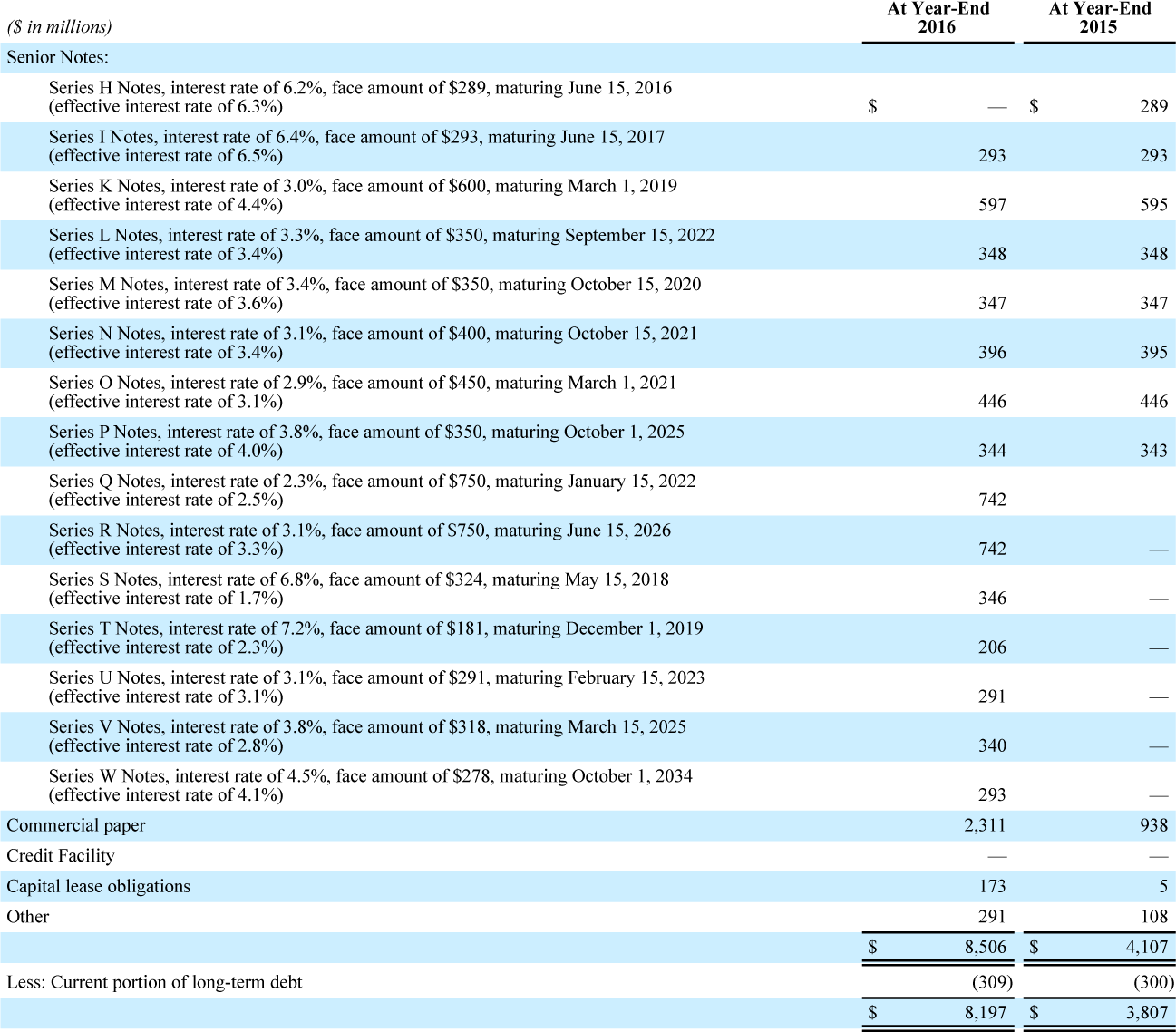Financial Information
Jump to a Section:
PART II
Item 8. Financial Statements and Supplementary Data.
MARRIOTT INTERNATIONAL, INC.
NOTES TO CONSOLIDATED FINANCIAL STATEMENTS
11. LONG-TERM DEBT
We provide detail on our long-term debt balances, net of discounts, premiums, and debt issuance costs, in the following table at year-end 2016 and 2015:

All of our long-term debt is recourse to us but unsecured. We paid cash for interest, net of amounts capitalized, of $165 million in 2016, $114 million in 2015, and $79 million in 2014. All of the Senior Notes shown in the table above are our unsecured and unsubordinated obligations, which rank equally with our other Senior Notes and all other unsecured and unsubordinated indebtedness that we have issued or will issue from time to time, and are governed by the terms of an indenture, dated as of November 16, 1998, between us and The Bank of New York Mellon (formerly The Bank of New York), as trustee. We may redeem some or all of each series of the Senior Notes before maturity under the terms provided in the applicable form of Senior Note.
In the 2016 fourth quarter, we completed debt exchange offers to exchange all validly tendered and not validly withdrawn outstanding senior notes previously issued by Starwood for new notes issued by us. In exchange for the validly tendered and accepted Starwood notes, we issued the Series S Notes through Series W Notes shown in the table above. At year-end 2016, $165 million aggregate principal amount of Starwood’s previously issued notes remained outstanding across five series, which we include in the “Other” caption in the above table. In connection with the exchange offers, we also obtained consent from the requisite holders of each series of Starwood’s previously issued notes to amend the indentures governing those notes to, among other things, eliminate substantially all of the restrictive covenants, change of control provisions, requirements that Starwood had been required to meet to consolidate, merge, or sell all or substantially all of its assets, and certain events of default. As a result of those consents, those restrictions and events of default no longer apply to the Starwood notes that remain outstanding.
In the 2016 second quarter, we issued $1,500 million aggregate principal amount of the Series Q Notes and Series R Notes shown in the table above. We received net proceeds of approximately $1,485 million from the offering of the Series Q Notes and Series R Notes, after deducting the underwriting discount and estimated expenses. We used these proceeds, together with borrowings under our Credit Facility, as defined below, to finance the cash component of the consideration paid to Starwood shareholders and certain fees and expenses we incurred in connection with the Starwood Combination.
In the 2015 third quarter, we issued $800 million aggregate principal amount of the Series O Notes and Series P Notes shown in the table above. We received net proceeds of approximately $790 million from the offering of the Series O and Series P Notes, after deducting the underwriting discount and expenses. We use these proceeds for general corporate purposes, including working capital, capital expenditures, stock repurchases, or repayment of commercial paper or other borrowings as they became due.
We are party to a multicurrency revolving credit agreement (the “Credit Facility”) that provides for up to $4,000 million of aggregate effective borrowings to support our commercial paper program and general corporate needs, including working capital, capital expenditures, share repurchases, letters of credit, and acquisitions. In addition, we used borrowings under the Credit Facility, all of which we later repaid, to finance part of the cash component of the consideration we paid to Starwood shareholders and certain fees and expenses we incurred in connection with the Starwood Combination. Borrowings under the Credit Facility generally bear interest at LIBOR (the London Interbank Offered Rate) plus a spread, based on our public debt rating. We also pay quarterly fees on the Credit Facility at a rate based on our public debt rating. While any outstanding commercial paper borrowings and/or borrowings under our Credit Facility generally have short-term maturities, we classify the outstanding borrowings as long-term based on our ability and intent to refinance the outstanding borrowings on a long-term basis. The Credit Facility expires on June 10, 2021. See the “Cash Requirements and Our Credit Facilities” caption earlier in this report in the “Liquidity and Capital Resources” section for information on our available borrowing capacity at year-end 2016.
The following table presents future principal payments, net of discounts, premiums, and debt issuance costs, for our debt as of year-end 2016:
